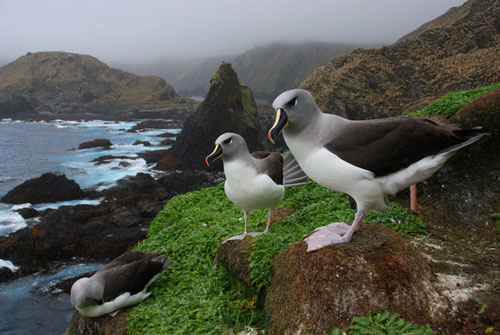‘The Action Plan for Australian Birds 2010 is the third in a series of action plans that have been produced at the start of each decade. The book analyses the World Conservation (IUCN) status of all the species and subspecies of Australia's birds, including those of its offshore territories. For each bird the size and trend in their population and distribution has been analysed using the latest iteration of IUCN Red List Criteria to determine their risk of extinction. The book also provides an account of all those species and subspecies that are or are likely to be extinct. Each categorisation is justified on the basis of the latest research, including much unpublished material that has been made available during workshops conducted with leading ornithologists and conservation biologists around the country as well as phone interviews and correspondence. The result is the most authoritative account yet of the status of Australia's birds."
The action plan has been written by Stephen Garnett and Judit Szabo of the Charles Darwin University and Guy Dutson. Click here for a review.
The new Action Plan lists 27 taxa as nationally Extinct, 20 as Critically Endangered (including the globally Vulnerable Grey-headed Albatross Thalassarche chrysostoma), 60 as Endangered, 68 as Vulnerable and 63 as Near Threatened as at 31 December 2010 within Australia.
Within the Australian Territory Grey-headed Albatrosses breed only at sub-Antarctic Macquarie Island, where the population was 94 annually-breeding pairs in 2007, representing less than 1% of the species' global population (click here to access the ACAP Species Assessment with population information).

Reference:
Garnett, S. Szabo, J. & Dutson, G, 2011. The Action Plan for Australian Birds 2010. Collingwood: CSIRO Publishing. 456 pp. ISBN: 9780643103689.
John Cooper, ACAP Information Officer, 3 October 2011

 English
English  Français
Français  Español
Español